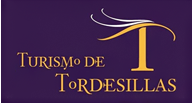Also known as the Castilian War of the Communities, 1520-1522
It was uprising by citizens of Castilian communities that, mainly, was stared in by industrial handmade bourgeoisie from some castilian villages that rised against the King Charles I and nobility's privileges. The economic crisis that the kingdom went through since Isabella the Catholic died, together with Charles I politics that raised taxes and placed his flemish councillors at preferential positions, roused dissatisfaction in Castile that got worse when Charles I went away to Germany in order to be elected Emperor. Toledo led the campaign against imperial politics and other castilian villages joined it.
The Santa Junta of Castilian Communities followers met in Avila. It appointed Juan de Padilla troops' field marshal who organized the revolt and all that was linked to Castile government.
The Santa Junta comes to Tordesillas in september, after Juan de Padilla had an interview with the Queen in the royal Palace. They made use of Queen Joanna's protection who was the legitimate Queen of Castile.
The king took conciliatory measures that did not lessened the rebellion, but the field marshal's ineffectiveness and betrayal, Pedro Girón, beared the taking of Tordesillas by imperial troops on December 4, 1520. Although Padilla reorganized the troops composed by Old Castilian Communities followers (comuneros), they were worn out morally. So the lack of organization made they were defeated in the battle of Villalar on April 23, 1521. The leaders of the revolt, Juan de Padilla, Juan Bravo and Francisco Maldonado were executed there a day after.
The defeat unleashed a hard repression. Toledo kept on putting up a lot of resistance to the command of the Bishop Acuña and María de Pacheco, Padilla's widow. But, finally, they were defeated in February, 1522.

